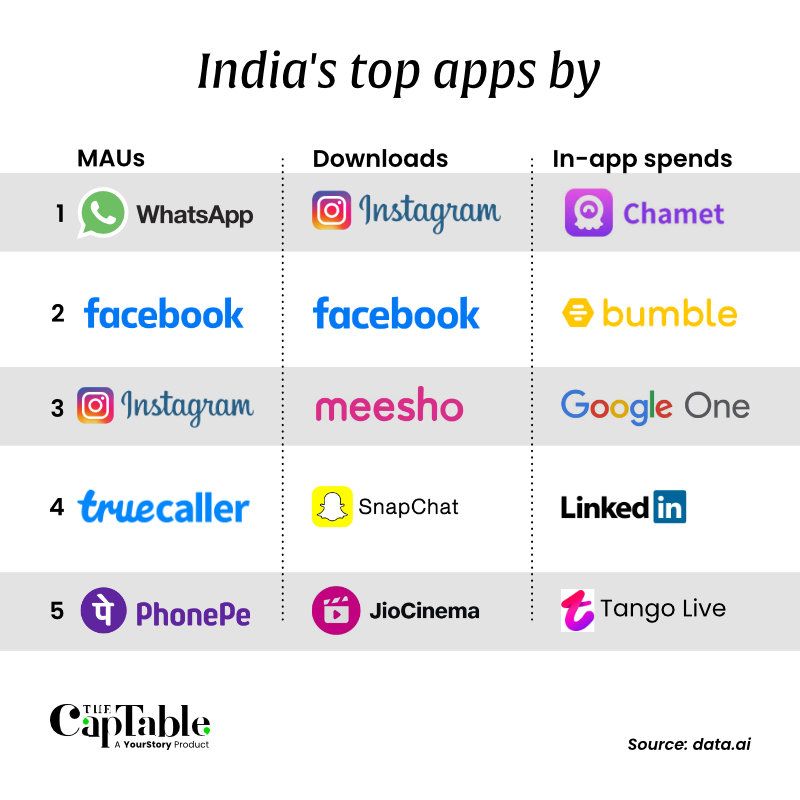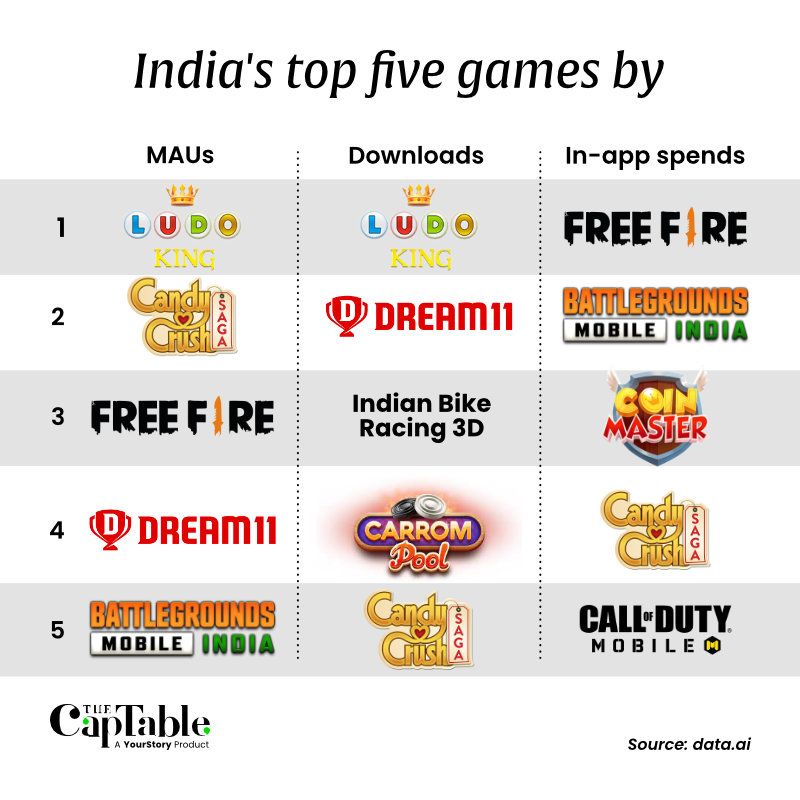In a post-pandemic world, consumers are spending an increasing amount of time on mobile apps. This has compelled brands and services to build seamless experiences in order to drive better returns.
Home to the second-biggest smartphone population in the world (after China), India continues to be one of the leaders in this bustling app universe. In 2023, Indians spent a jaw-dropping 1.19 trillion hours on mobile apps—the highest globally. This is a 13.2% growth from 954 billion hours in 2021, according to a new report from app analytics provider data.ai (formerly App Annie) which The CapTable has exclusively accessed.
China, despite having more people owning mobile phones, trailed India when it came to hours clocked (1.12 trillion) on apps. Indonesia, Brazil, and the US rounded out the top five markets.
That India has a heavily skewed mobile-first population is no secret. Tech giants such as Google have been betting on this demographic for years, often launching India-first apps (Google Pay, for instance) before releasing them globally.
It essentially means that fewer new apps are finding favour with Indians, while older apps across categories continue to drive user engagement.
When it comes to consumer spends, the divide between India and advanced app economies like China, the US, Japan and South Korea is even more glaring. Despite recording the highest hours clocked on mobile apps in 2023, India didn’t feature even among the world's top 20 markets in terms of in-app spends.
This, even though last year saw consumer spending on apps breaching a new high of $171 billion (+3% year-on-year) after a 2% year-on-year decline in 2022. “The mobile app economy is now a half-a-trillion-dollar market, with nearly $1.5 billion in spending each day in 2023 across app store spend and mobile ad spend,” data.ai stated in its report.

The Indian mobile market also threw up some surprises in the most downloaded genre/category of apps. ‘Utility and Productivity’ apps clocked the highest number of downloads at 1.28 billion, with VPNs and web browsers growing 42% year-on-year. E-commerce, Photo and Video, and Entertainment and OTT apps followed, with 650-750 million downloads in each sub-genre.
OTT was also one of the top three app categories in terms of consumer spends, with Disney+ Hotstar pocketing most of the moolah. Online Dating (Bumble) and Live Video Chat (Chamet) apps, meanwhile, ruled the roost with $110 million spent by users in these categories last year.
“Video-based subgenres dominated the leaderboard by consumer spend in 2023, including the top sub-genre, OTT. Sub-genres including Short Videos, Video Sharing, and Live Sports all saw double-digit growth compared to 2022,” data.ai explained.
Even with the proliferation of newer app categories such as grocery delivery, telehealth, budget trackers, flight booking, sports betting, and so on, Indians continued to spend most of their time on messaging and communication (WhatsApp), entertainment (YouTube), and social media (Facebook) apps.
Even shopping and e-commerce apps registered flat growth (only 3%) since 2022, indicating that this market might be growing saturated. In contrast, newer, more verticalised platforms such as LimeRoad, Tira, and Purplle were the “breakout” shopping apps of 2023, according to data.ai.

India’s app economy also saw an interesting gender split. While Video Editing, E-commerce, and Grocery emerged as the top three app categories for women, Flight Bookings, Digital Wallets, and Fantasy Sports ranked among the top three genres for men. The likes of ConfirmTkt, Digi Yatra, and Namma Yatri emerged as the breakout apps by downloads in the hot travel category.
2023 also saw ‘Generative AI’ entering the global app universe. “AI chatbot apps really took off in the later part of the year with the launches of ChatGPT and Character AI, and adoption has remained strong since…. The AI popularity was fairly global, though the genre did not rank among the top five breakout genres in several Asian and Middle Eastern markets, including China, Japan, Saudi Arabia, and Turkey,” data.ai stated.
In India, AI Chatbot weekly downloads peaked at 10 million in late-July. Weekly spends, meanwhile, touched a high of $100,000 in December. In the US, peak weekly spends were at $4.5 million, indicating a far higher adoption of generative AI in the West.
AI Art Generator weekly downloads in India, on the other hand, grew steadily between October to December, to over a million. Spends remained low, achieving a weekly high of $15,000 in December. In the US, meanwhile, peak spending hit $1.4 million. “This AI growth also fueled embedded features across virtually all mobile sectors, paving the way for a fresh wave of digital innovation,” data.ai added.
Edited by Ranjan Crasta
Got a tip? If you have a lead we should be chasing at The CapTable, write to us at tips@the-captable.com

Convinced that The Captable stories and insights
will give you the edge?
Convinced that The Captable stories
and insights will give you the edge?
Subscribe Now
Sign Up Now